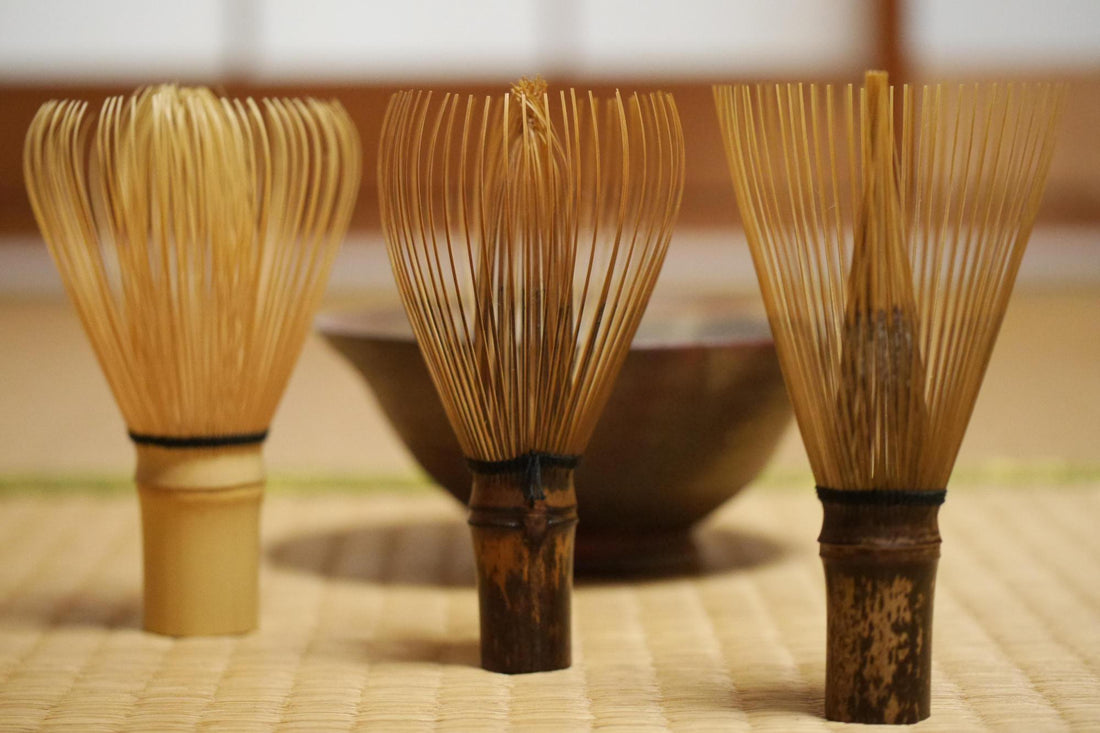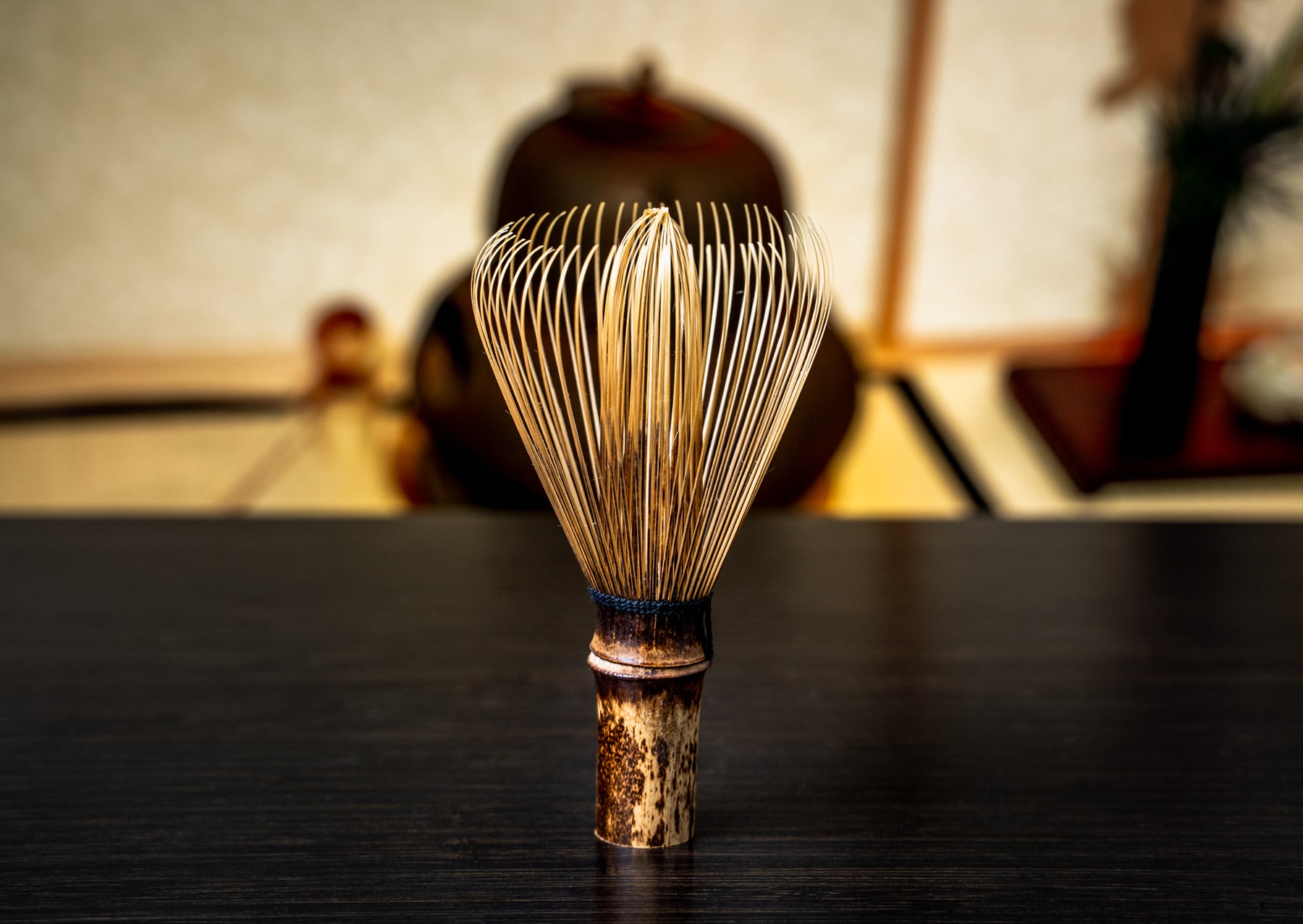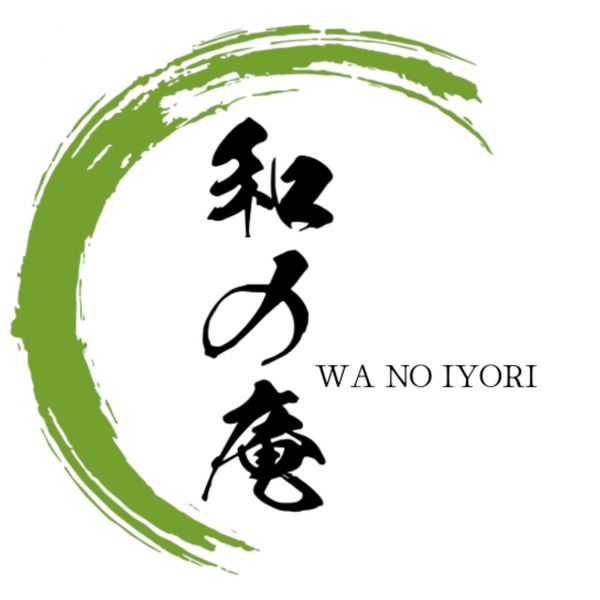
Tea Whisk Selection: Finding the Perfect Tool for Your Matcha
Aktie
Alright, so you’re getting into matcha. Welcome to the club! I remember when I first decided to make matcha at home – I was clueless. I thought, “Hey, it’s just powder and hot water, right?” Yeah… wrong. Turns out, the tea whisk selection is kind of a big deal. You wouldn’t think a little bamboo stick could make or break your matcha, but trust me, it can.
Why Your Tea Whisk Matters
Let me set the scene. I was in this tiny tea shop, the kind that smells like old books and dried herbs. The owner was this elderly guy with wild gray hair – think Doc Brown from Back to the Future but with a calm, Zen-like vibe. He handed me a bowl of matcha that was so frothy, it looked like a mini green cloud.
“How’d you do that?” I asked, staring at my own sad, flat matcha that looked like swamp water.
“Tea whisk,” he said, holding up this delicate bamboo whisk that looked like it would snap if I breathed too hard.
And that’s when I learned – the right tea whisk selection is everything. It’s not just about making tea; it’s about creating that perfect froth, that creamy texture, that Instagram-worthy green foam.
Types of Tea Whisks – The Basics
So, let’s talk about the different types of whisks. You’d think they’re all the same, but nope. There’s the classic bamboo chasen, which is pretty much the gold standard. It’s got thin, flexible tines that can whip up matcha like a pro.
I bought a cheap, mass-produced whisk from a discount store once. Huge mistake. The tines were stiff, and instead of frothing the matcha, it just sort of flopped around like a wet noodle. Lesson learned – don’t cheap out on your tea whisk selection.
Then there are metal whisks and even electric ones. Look, I get the appeal – less work, right? But here’s the thing: metal whisks can bruise the matcha and mess with the flavor, and electric whisks? They’re loud and kind of ruin the whole calm, meditative vibe of the tea-making process. If you’re serious about matcha, stick with bamboo.
Size and Number of Tines – Yes, It Matters

Okay, confession time – I once bought a whisk with 120 tines because I thought, “More tines, more froth!” Right? Wrong. It was like trying to whisk matcha with a hairbrush. The matcha splattered everywhere, my hand cramped up, and the foam was a mess.
Turns out, the standard whisk with 80 tines is more than enough for most people. It’s easy to handle, and it creates that velvety froth without giving you a wrist workout. If you’re new to matcha or just want to whip up smaller servings, a smaller whisk with fewer tines might be a better fit.
But hey, if you’re the kind of person who likes to go big or go home, those 120-tine whisks are out there waiting for you. Just... maybe wear an apron.
Quality – Not All Bamboo Is Created Equal
Here’s the thing – bamboo looks pretty much the same whether it’s $5 or $50, right? Wrong. I learned that the hard way when I bought a super cheap whisk that started to splinter after a week. Not exactly the vibe I was going for.
Good quality bamboo is smooth, sturdy, and flexible enough to handle some serious whisking. Look for whisks labeled as hand-crafted or sustainably sourced. They’re usually made from denser bamboo and have a more polished finish. Plus, they just feel better in your hand – like you’re holding a tiny piece of art instead of a flimsy stick.
Price – Is It Worth Splurging?

Alright, let’s be real – some of these whisks can get pricey. And if you’re just dipping your toes into the world of matcha, spending $30 on a whisk might feel like overkill. But a decent bamboo whisk doesn’t have to cost a fortune. You can find a solid, beginner-friendly chasen for around $15.
And if you’re like me and tend to break stuff, maybe get a cheaper one first. I can’t tell you how many times I’ve snapped a whisk because I was too rough with it or forgot to soak it before using it. That’s another thing – soak the whisk in warm water for a minute before you start. It softens the bamboo and keeps it from snapping. Again, learned that the hard way.
Final Thoughts – Don’t Overthink It
At the end of the day, choosing the right tea whisk isn’t rocket science, but it’s not something to totally ignore either. If you’re serious about matcha, go for a well-made bamboo whisk with around 80 tines. It’s the sweet spot between too flimsy and too intense.
And don’t worry if your first few attempts at frothing look more like green soup than matcha foam. It’s all part of the learning curve. Just keep practicing, keep whisking, and don’t be afraid to make a mess. Trust me, that first perfect bowl of frothy matcha will be totally worth it.
Happy whisking – and may your matcha be smooth, your whisk be sturdy, and your kitchen be a little less green by the end of it.∫√


